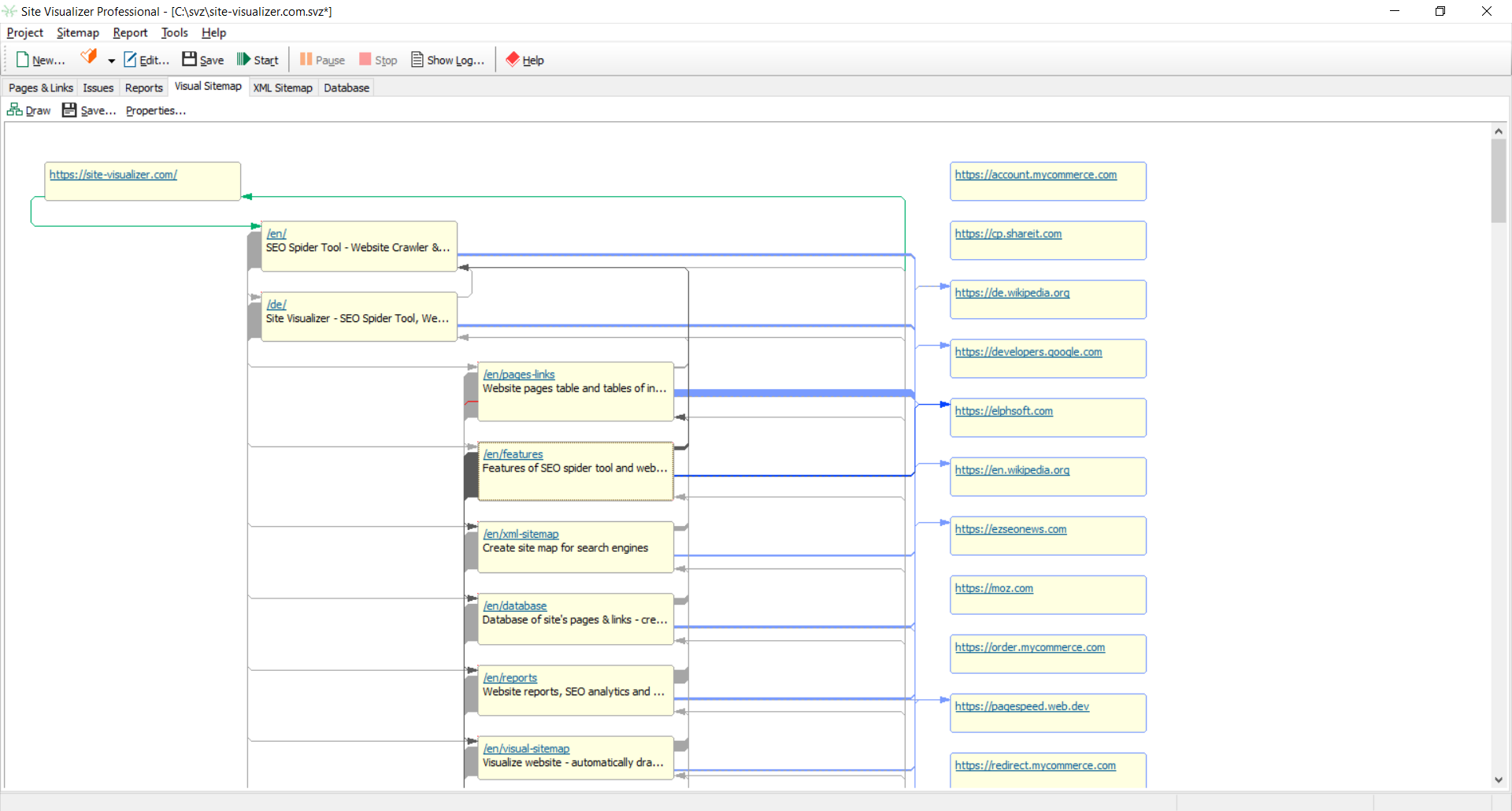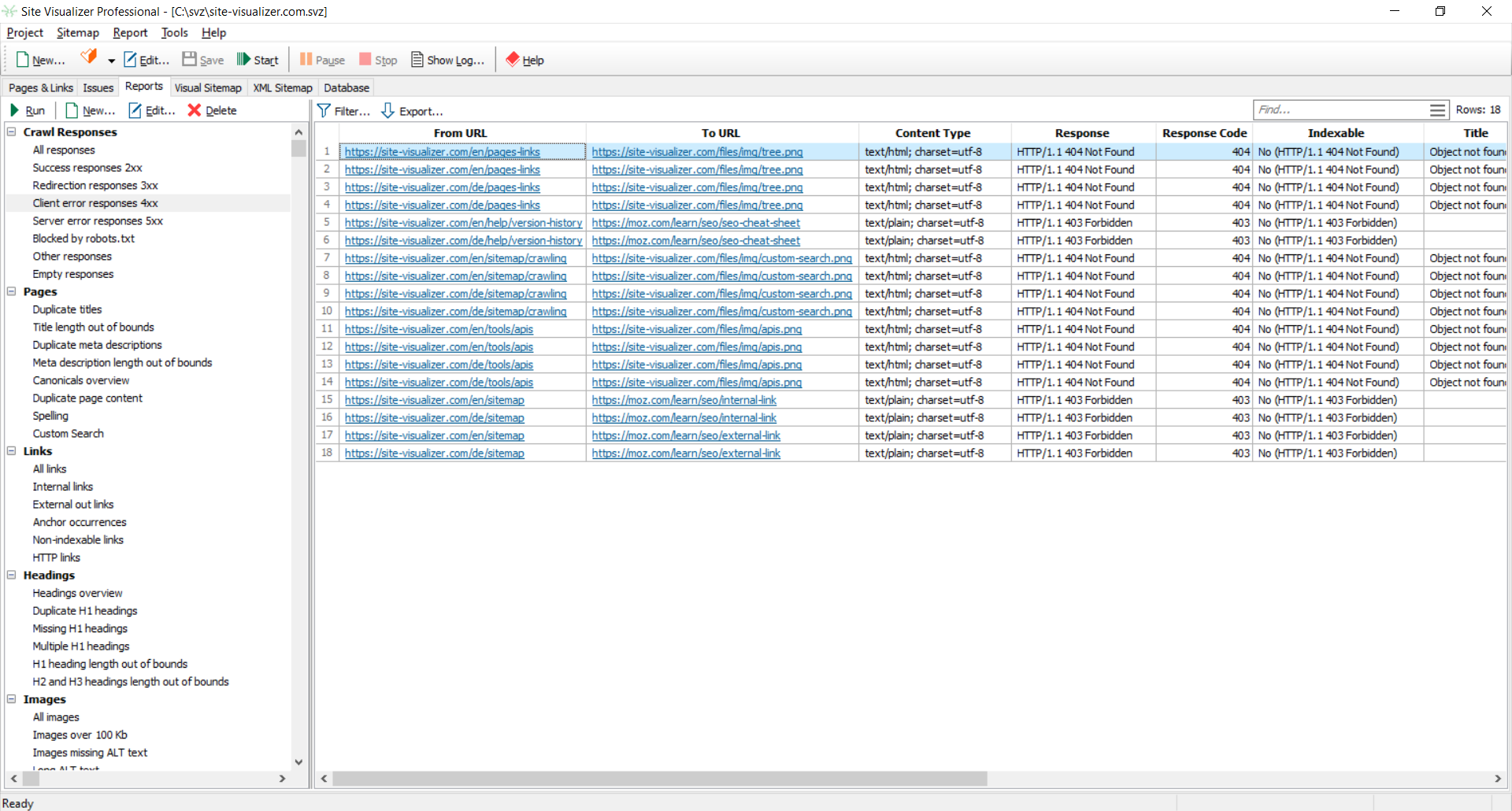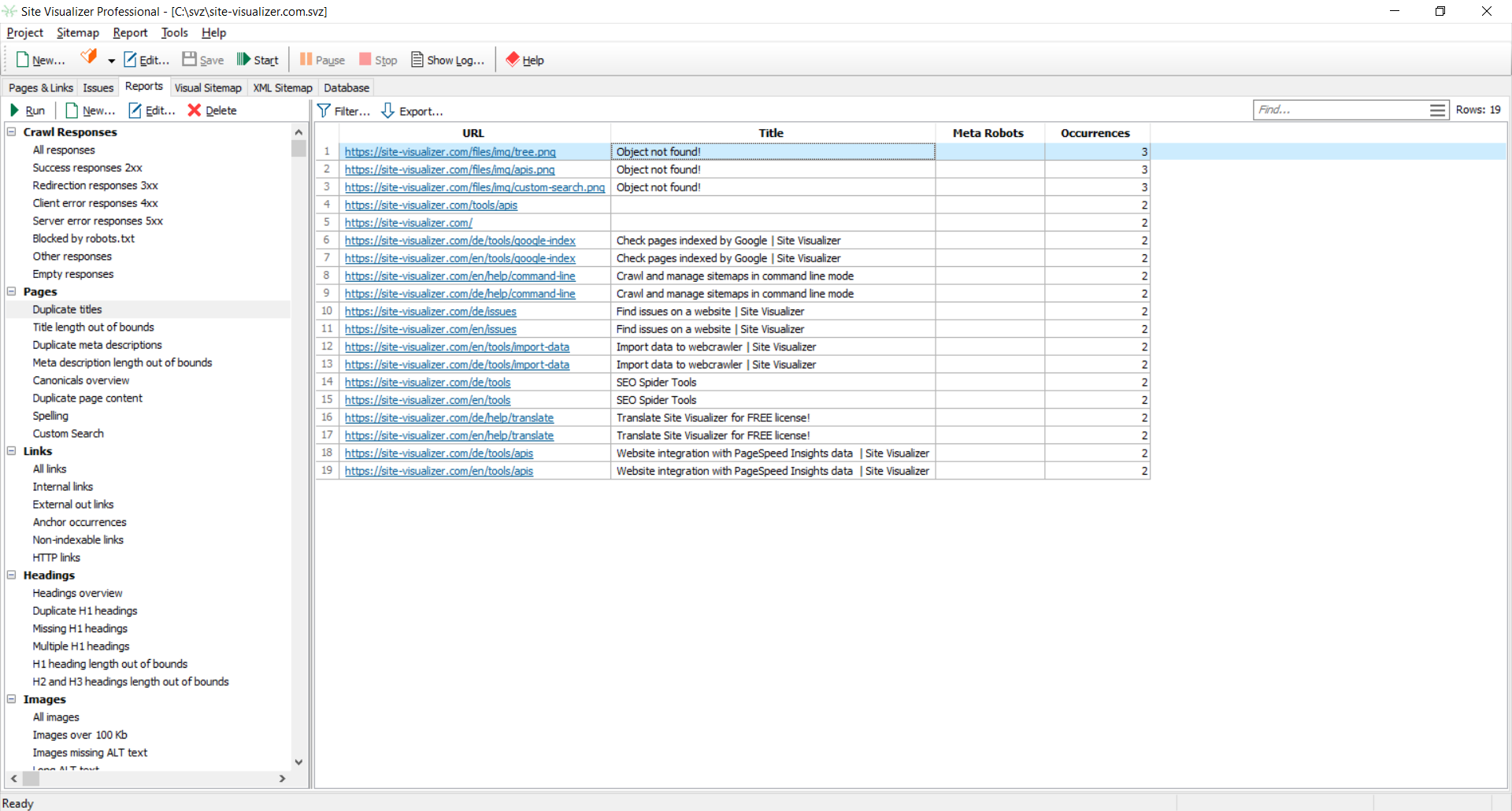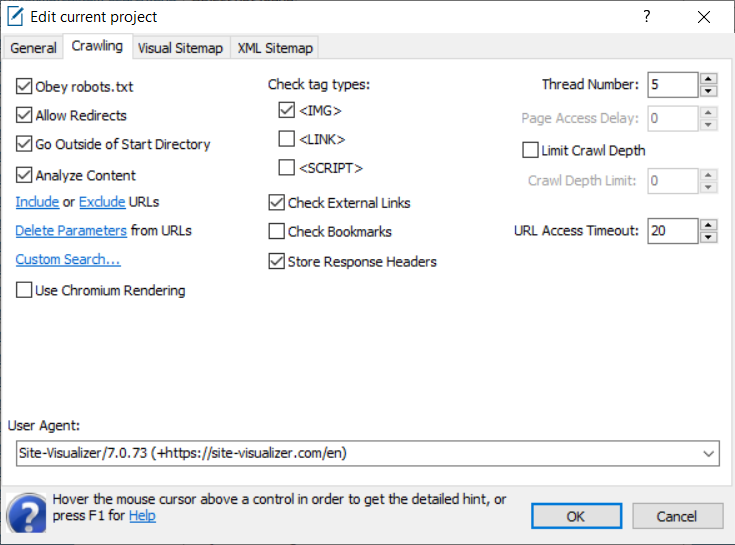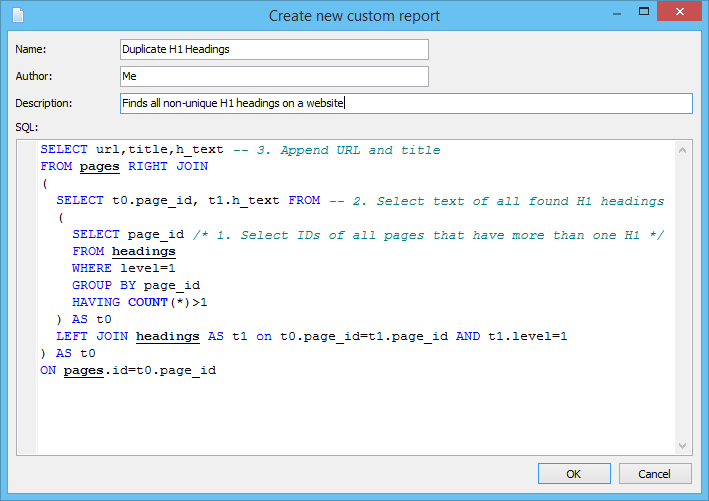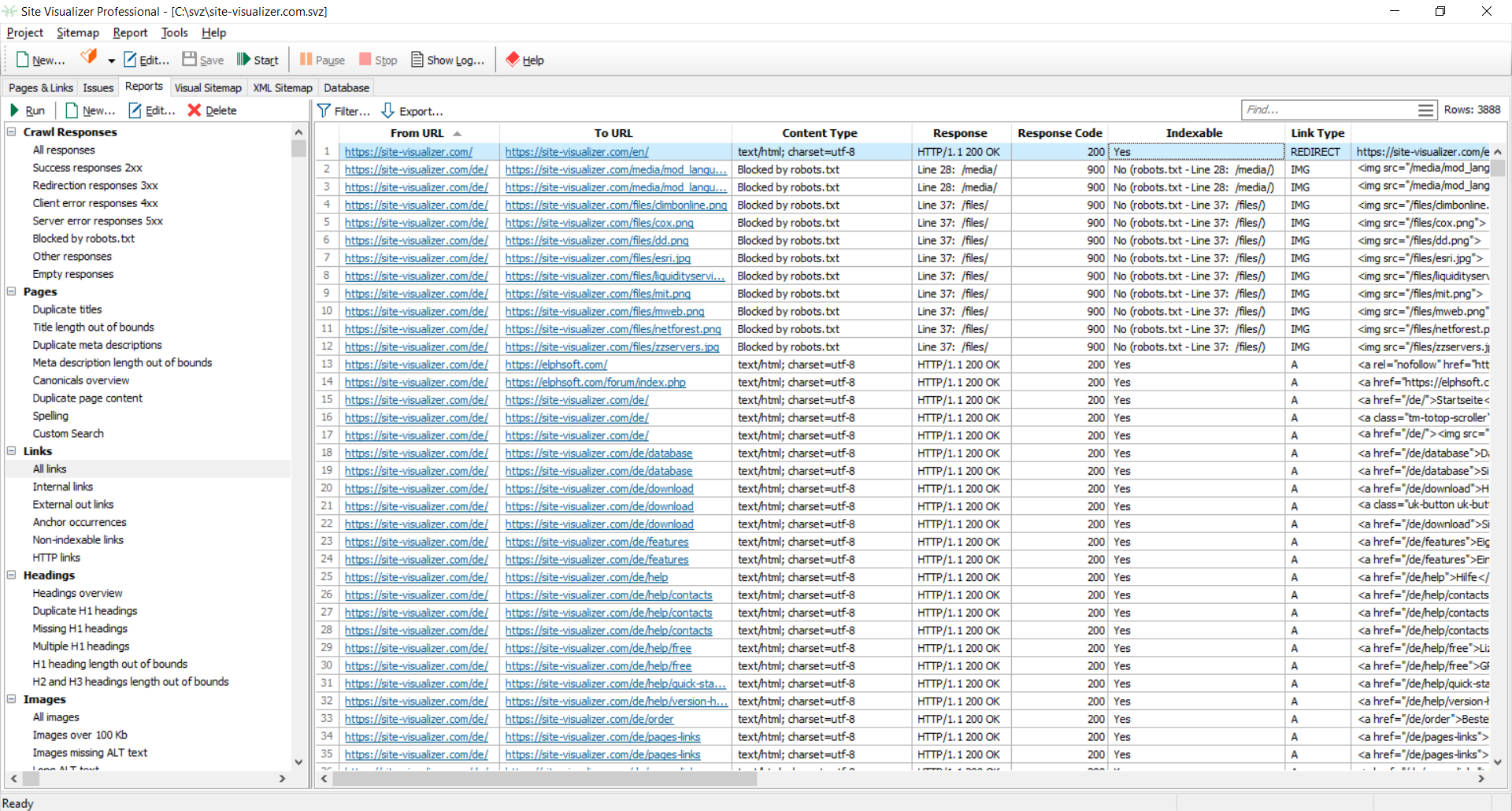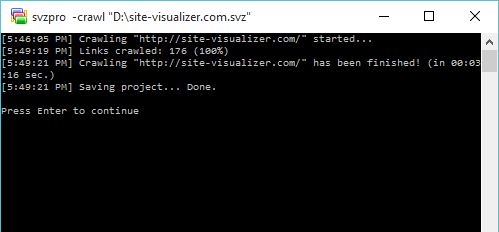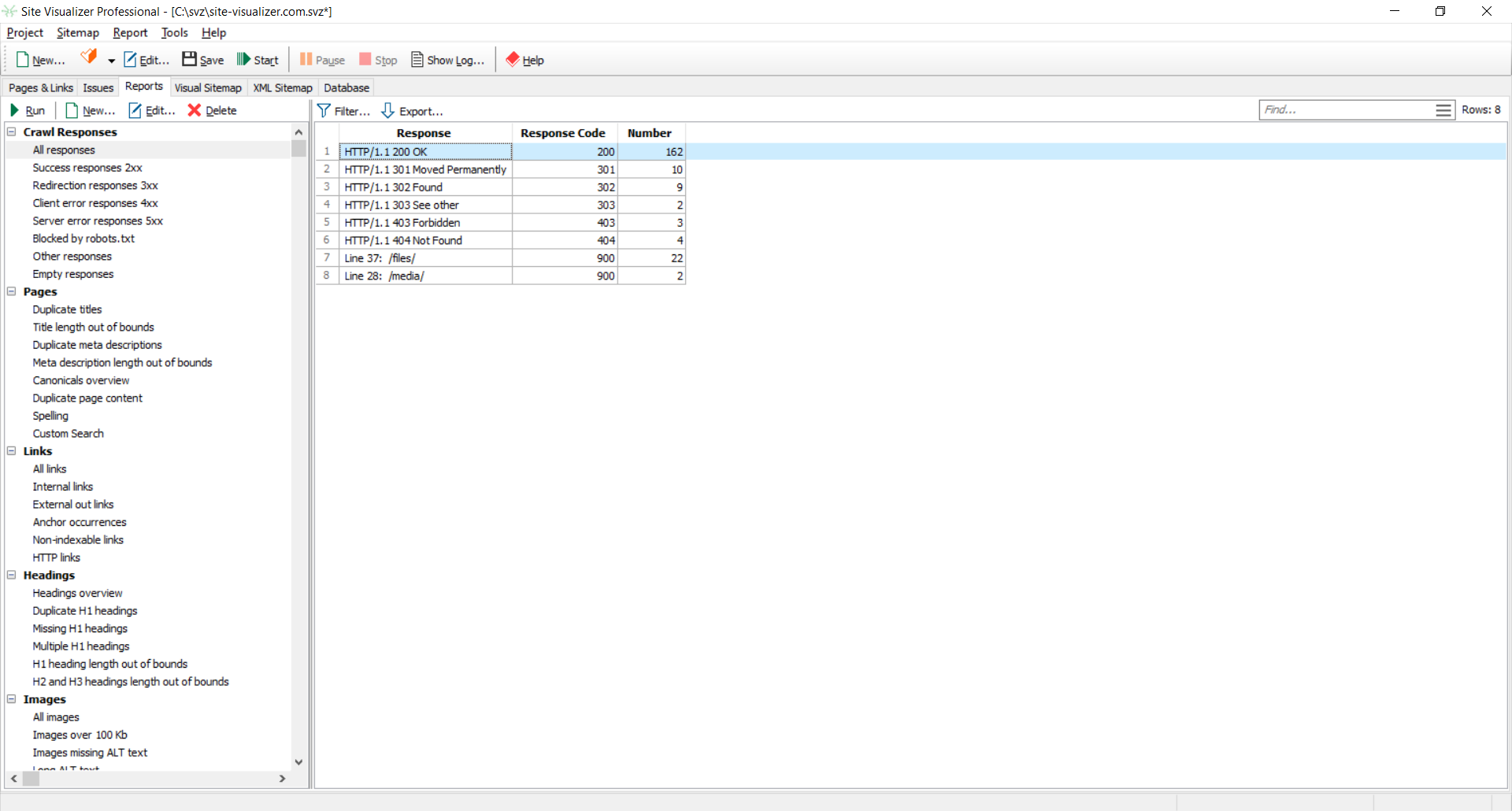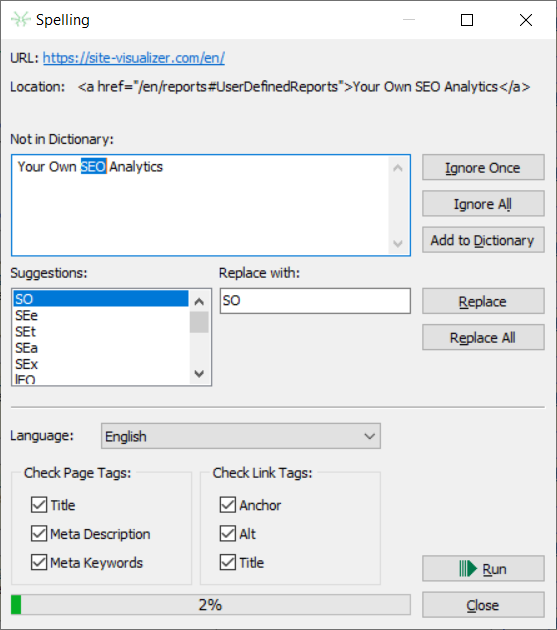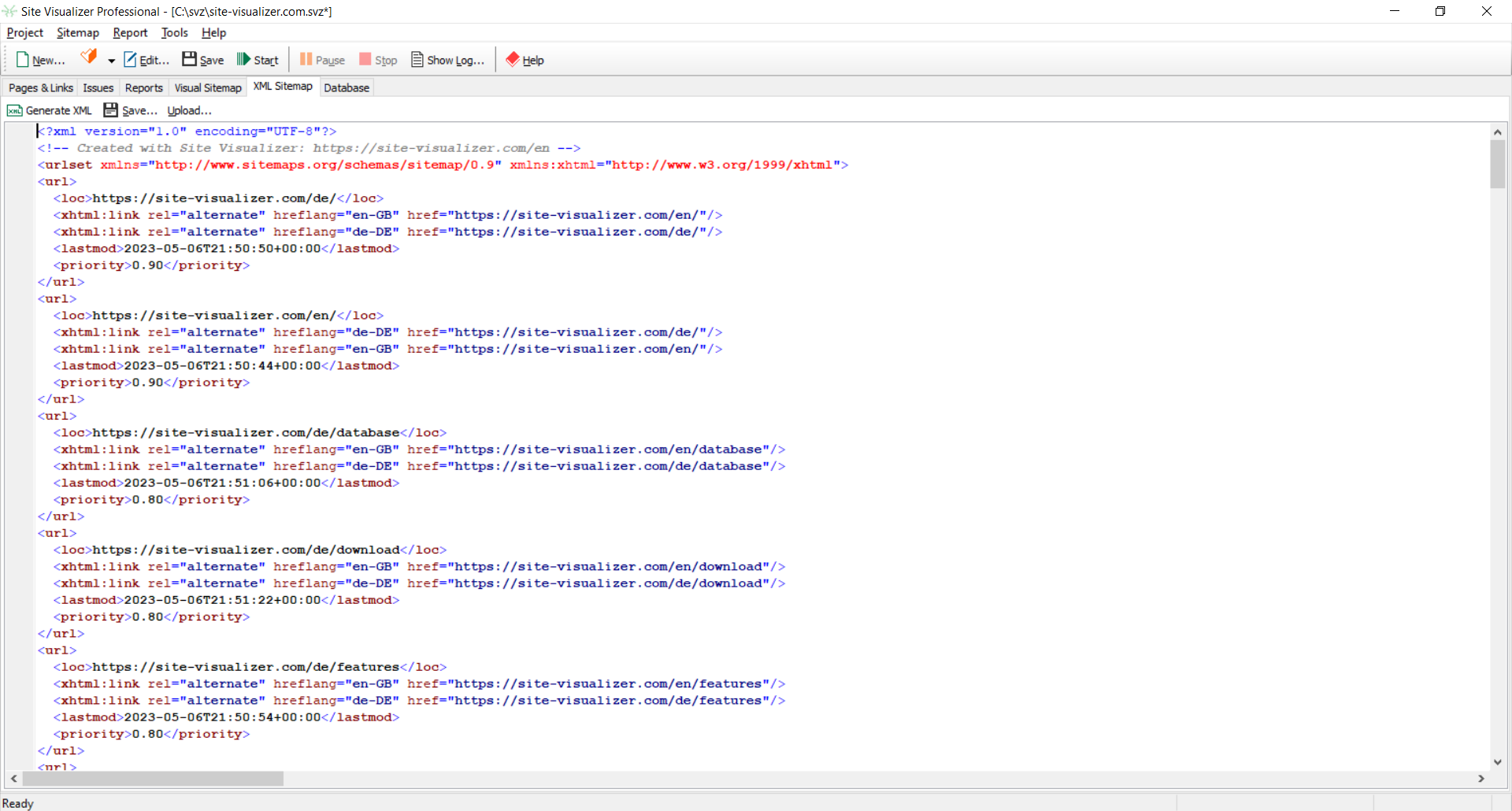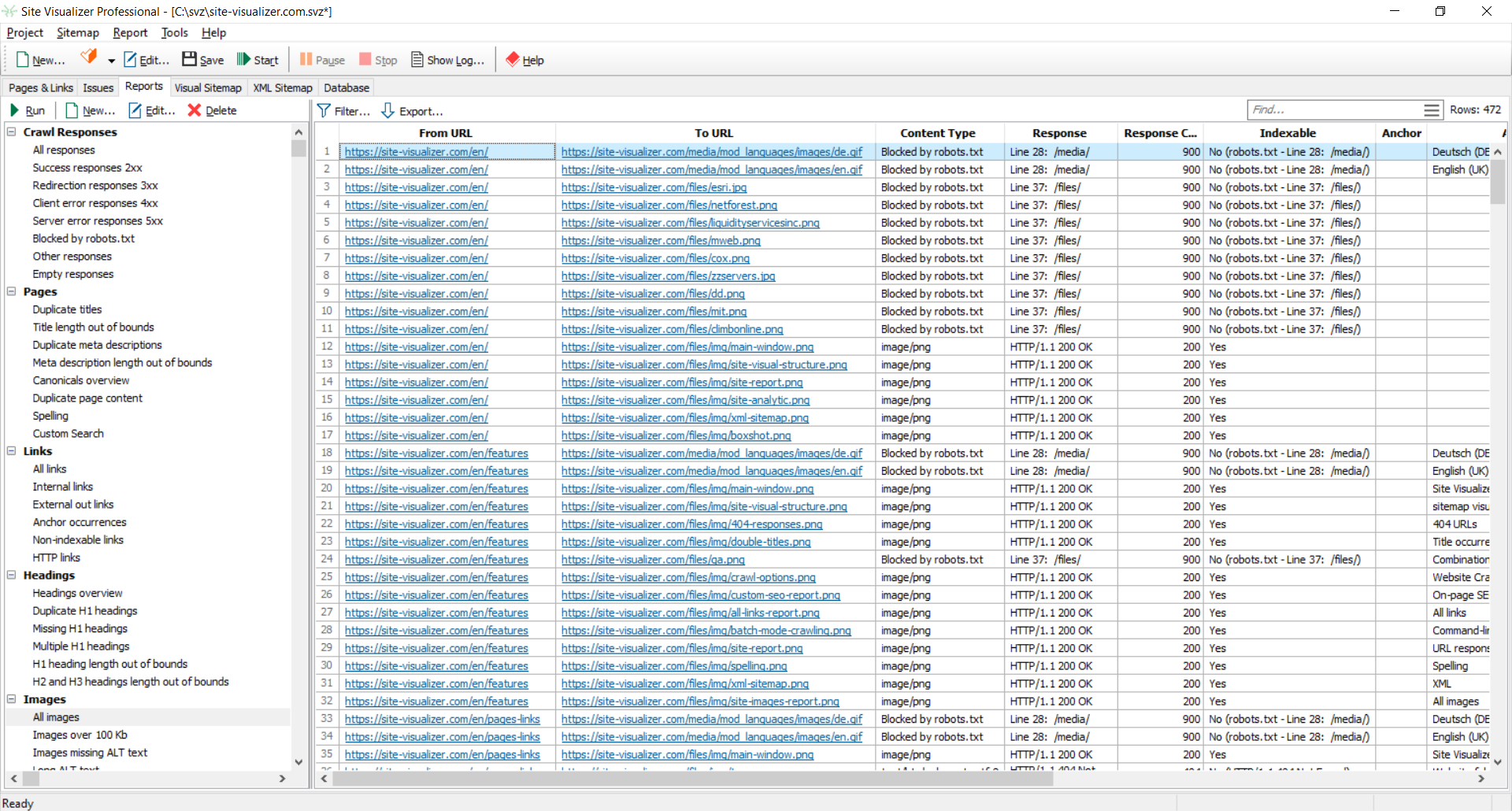Core Features of Site Visualizer
Complete Website Overview for the Purposes of On-Page SEO
The crawler gathers all SEO-related parameters for every URL within a site, such as:
- Page title, meta tags, and their lengths (in characters).
- The number of in-links, out-links, and external out-links.
- Information on H1–H6 headings and the number of their occurrences.
- URL content type (HTML, PDF, PNG, etc.) and response code (2XX, 3XX, 4XX, or 5XX); link anchors' text and REL attributes; image ALT and TITLE text; URL source code, its size, etc.
- Other useful features: the number of words for every page, the rel="canonical" attribute, and more.
All these data are combined in the Pages table. When moving up or down through that table, you can view all outbound or inbound links for the current page in the respective Links table (Out Links or In Links).
Visual Map of a Website
If you need to show someone how a website looks from outside, just click the Draw button. The site will be presented as an infographic with pages referenced by links, so you can discuss the website's architecture with your customer, colleague, boss, etc.
Broken Links Checker
Every link found by the spider is checked during a website crawl. To view all broken links (both internal and external), double-click the Client Error Responses report. Among other things, the report contains the From URL column, so you can easily find all pages with broken links on your site and fix them.
Duplicate Content and Google Index Checker
Having unique content is a very important part of on-page SEO. You can easily check if your site pages contain the same page titles or meta descriptions, H1-H6 headings, or link text anchors by double-clicking the corresponding report. You can also get the list of URLs indexed (and not indexed) by Google.
Combination of Crawled Data with External Data

Often it's not enough to have only internal data for good website analysis. Using Import Wizard of Site Visualizer, you can combine crawled data with data from any other SEO tool or service, such as: Google Analytics, Webmaster Tools, etc.
Gather Only Website Data That You Need
You can use various spider options to crawl only certain directories, file types, or URLs. This way, you can optimize the website scanning process and save your project from irrelevant data:
- Crawl only specified directories.
- Include or Exclude URLs option.
- Remove URL address parameters.
- Possibility to crawl password protected areas of a website.
- Exclude images, CSS files, JavaScript files, or external links.
- Multithreading, access delay and timeout, the User Agent string, and more.
Customizable Reporting System
Most SEO tools have the same set of basic website reports. Site Visualizer gives you a unique opportunity to create a website report that is unavailable when using other site analyzing tools. If you are an experienced user, you can do it yourself, using the application's local database and SQL. Otherwise, you can send us a report example, and we'll do it for you at no cost; you'll only need to add the report to your Site Visualizer installed.
Lists of a Website's URLs
This feature allows you to view and export links of a site by selected criteria: internal links, external outbound links, or both internal and external links. The reports contain all valuable link attributes: Content Type, Response Code, From URL, To URL, Alt, Rel, etc.
Command Line Spider
The most of Site Visualizer functions are available via the command-line interface (batch mode). This allows you to automate some SEO routines you're doing every day manually (e.g., check broken links, update XML sitemap, etc.), or even use the program from within another application or service.
Redirects and Server Errors Checker
The Redirection Responses report allows you to check for links referring to an URL that has been moved to another resource. The Server Error report shows links returned as broken by the website's server.
Spelling
Use this feature to check the spell of a website's page titles, descriptions, keywords, and other tags.
XML Sitemap
Like most other website spiders, Site Visualizer can create an XML sitemap. Just configure the corresponding settings and save your sitemap as an XML file. After that, you'll also be able to automatically upload the sitemap to your website by FTP.
Images and Headings
To list these items, double-click the corresponding report: Website Images or Headings Overview.

